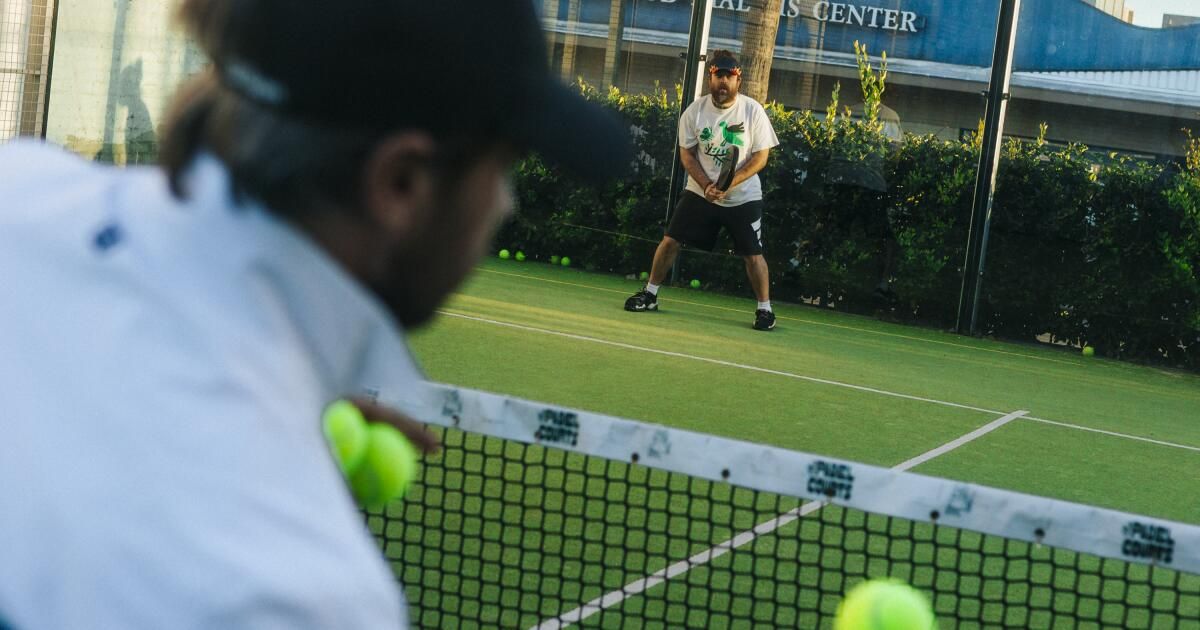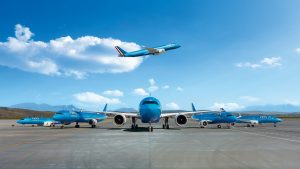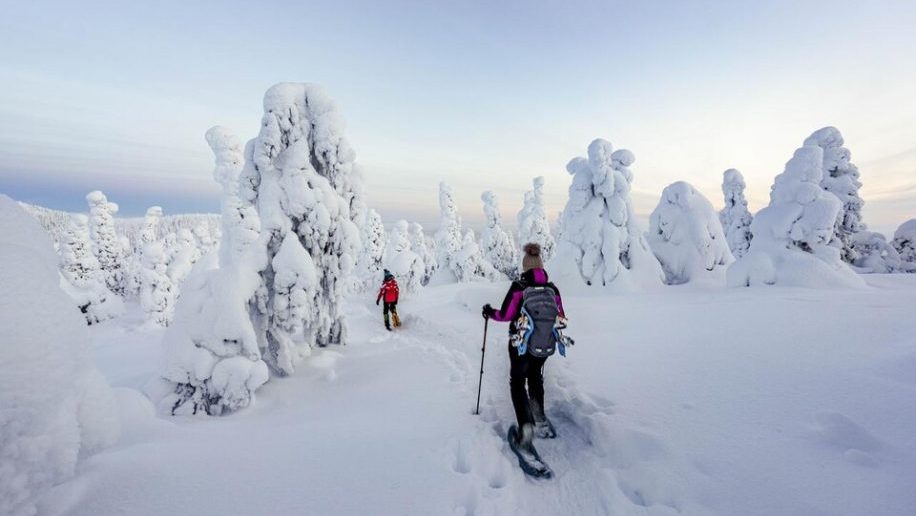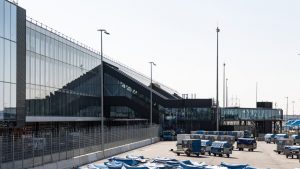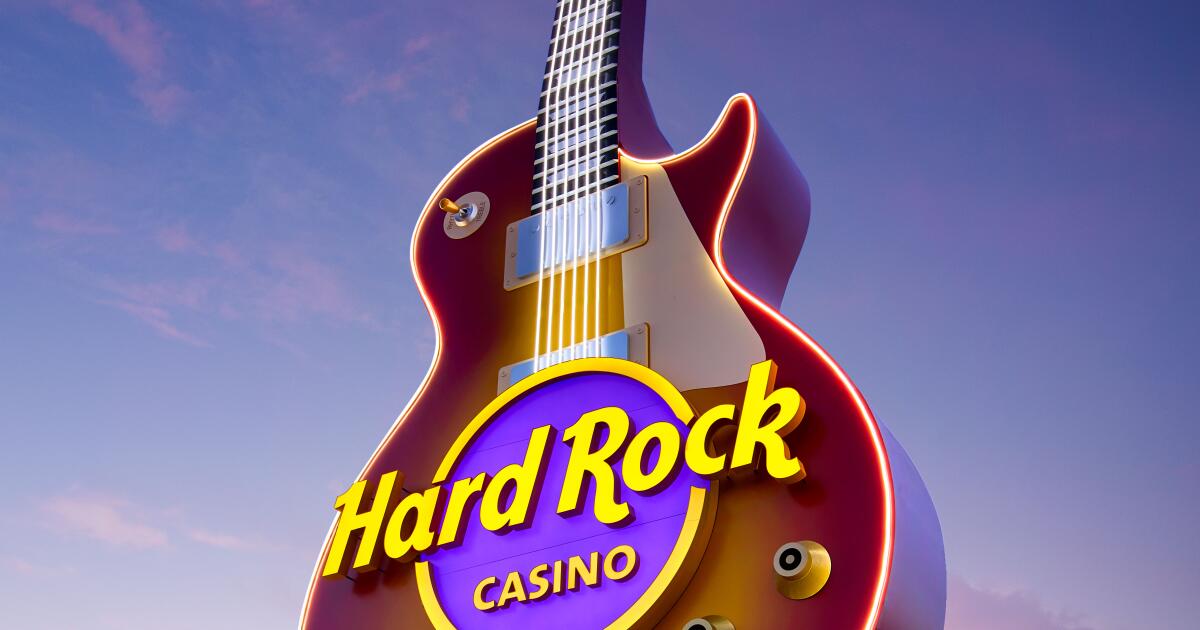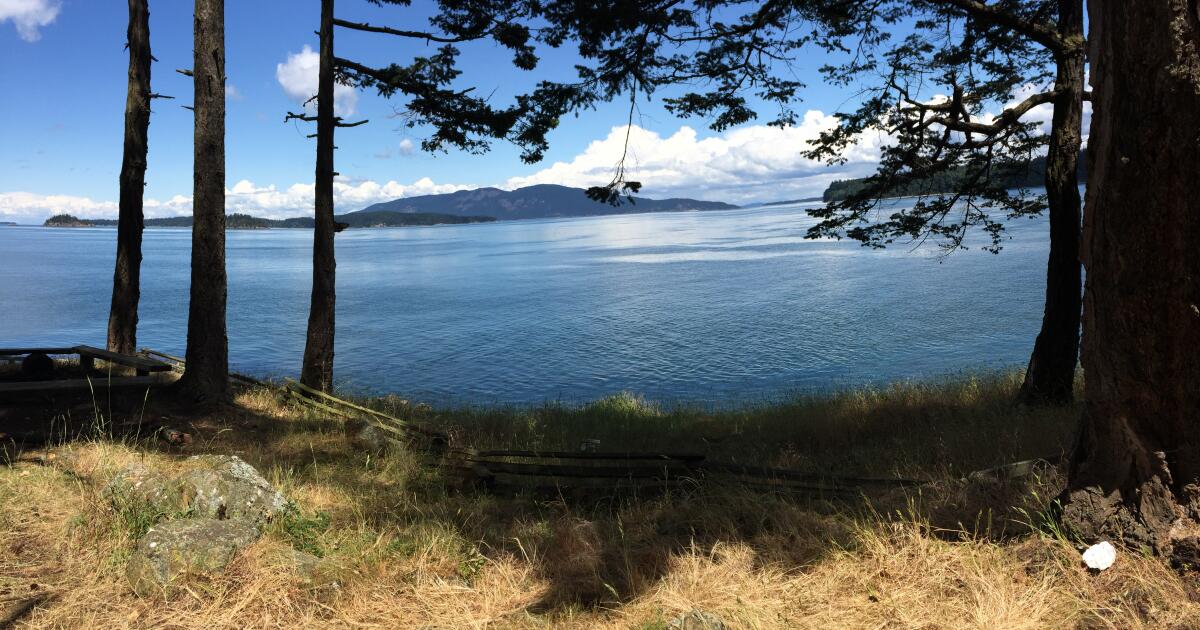The ball appears in the air and rises in an arc, drifting against the blue sky, then goes down with a thud On the glass wall behind Jon Guerra. Outside.
“Your swing is too hard,” says Guerra.
Guerra, who goes for coach Jon, is sending lumeos through the network to me and three other students on the paddle courts, a hiding place right next to Sunset Boulevard in Little Armenia. We are learning to Padel, a racket sport played with foam palette rackets on a tennis court surrounded by tempered glass walls. And he is demonstrating to be a great challenge.
“Don't go to the ball, let you bounce,” says Guerra after a boomeranges ball out of the wall towards me and I miss him completely.
Coach Jon Guerra, the chief coach of the paddle courts.
(Chiara Alexa / for the Times)
A sport that began in the 1960s in Mexico, Padel has already exploded in Europe and South America, and fans expect it to do the same in the United States, has been gaining constantly in Los Angeles, with new paddle centers that arise around the county: there is Padel in Westfield City, pure padel the in Sherman Oaks and on the courts of the Galaxy Park in the car. This summer, the Los Angeles Padel Club, co -founded by the real estate developer of Los Angeles Steve Shpilsky, will open a Padel club house in a restored mansion of the Hollywood era in Culver City. Later, the King of Padel, a club of Pickl and Pickleball covered, will join the development of West Harbor de San Pedro.
The padel courts, where I am testing the sport, resembles a field club of the size of Thumbelina. It has a cozy atmosphere: there is a fireplace in the Club house and a headdress with Tyler, the “Igor” album of the Creator, along with a wall full of fiberglass paddle disorders and Goam tripophobia inductors.
Guerra, who reached a classification of number 13 in the United States in 2023, began the clinic of the day by explaining the difference between paddle and tennis, the obvious is the playable walls that surround the court. You can fly, play a rebound or let the ball bounce from the tempered glass walls before hitting it. If his return hits the wall first, he is out.
The diffuse ball looks like a tennis ball but has a slightly lower PSI, which means that it is a little flatter and less inflatable. The services are lit and the Aces are slow and intricately placed shots that bounce at an angle from the side glass. It is an errors, Guerra tells his students: you are waiting for your opponent to spoil a ball in a way that allows you to make a shot that they cannot return.

Padel balls have a slightly lower PSI than a tennis ball, which means they are a little more flat and less inflatable.
(Chiara Alexa / for the Times)
And there is an important rule: Padel is played doubles. Always. Much of the game implies the joint strategy.
“Mávate with your partner,” says Guerra while sending balls to the front of the network so we can fly. “The partners move to fly together and return to the baseline together.”
I played tennis competitively at high school, not very good, but I stayed in some matches. But on this day I am struggling to hit any good take. The game feels a bit slower, more depending on lobsted lobs than power; It reminds me of a little billiards, although Squash is probably the closest Padel relative.
Guerra tells me to turn my body in a closed position that feels contradictory to the open blow of a tennis swing. Padel swings are short and precise, and extremely uncomfortable. I know that I look stupid as I hit the network.
“I have friends who are older people at the country club where they start playing who have tennis experience that find it difficult to learn after their ideas binds,” says Guerra at the Club house after the clinic. “Everything depends on how much I can forget.”

Padel began in Acapulco, Mexico, in 1969.
(Chiara Alexa / for the Times)
The sport began in 1969 when the Mexican businessman Enrique Corcuera modified the Squash court in his holiday house in Acapulco. Initially he named the game “Paddle Corcuera”.
In 1974, Corcuera's friend, Alfonso de Hohenlohe-Langenburg, a Spanish and hotel prince who came out with Ava Gardner and Kim Novak, imported the game to his hotel Tony Marbella Club in Marbella, Spain. It spread rapidly as a sport of field clubs due to its nature four: many compare their company quality with golf. Today, Spain has more than 16,000 paddle courts, which makes it the second most played sport in the country behind football.
Despite the roots of his field club, Padel is competitive. It is more dynamic than the Pickleball, and the curve to learn it is a bit more steep. By the time I finally hit a setback on the other side, they have been some attempts. I feel triumphant. The next volley puts my racket and lands right in front of the glass wall base, which makes my opponent return.
“Perfect shot,” says Guerra. I am delighted. My teammate and I play rackets to celebrate as if we were Agustin Tapia and Arturo Coello (co-no players in the world).
Padel is still the most popular in Spain, where it is war, as well as Argentina, but it is emerging in the United States. There were less than 20 courts in the United States in 2019, there are now almost 500. Houston and Miami are foci. Floridian rapper Daddy Yankee opened the 10by20 Padel Club (the courts are 10 meters wide by 20 meters long) and has a professional team, the goats of Orlando Florida.
The is a bit slower in absorption, but that will surely change as Padel popularity grows. There is a professional team called the Los Angeles Beat in the Pro Padel League (PPL), the American circuit, which is mainly composed of Spanish and Argentine players classified internationally. And the new location of Culver City of Los Angeles Padel Club will be the home of the First Academy of Youth Development on the West Coast.
“Los Angeles have the perfect ingredients to bet their claim as one of the most important cities in the world for padel with their strong tennis and sport of racket, ideal climate, international community and emphasis on well -being and social interactions,” says Christ Ishoo, co -owner of Los Angeles Beat, who will also be housed at the House Club of Clubs Padre de los Angeles Padel.
Even so, the idea that Padel will follow the path of Pickleball is questionable. Sport does not have the same accessibility as tennis and pickleball, which can be played for free in the many municipal courts of the city. The time on the paddle courts is $ 100 per hour (which is not so bad when it divides four ways) and must be reserved approximately one week in advance.

(Chiara Alexa / for the Times)
However, Guerra sees a great promise. “I feel with the Pickleball, it's like when you see an entrepreneur who becomes a billionaire,” he says. “You don't see the 20 years he had to fight to hurry.”
There was talk that Padel could become a competitive sport for the 2028 Olympic Games, but that effort fell short (it will be a demonstration sport). However, there is still hope that it will be accepted for the 2032 Summer Games in Brisbane, Australia.
The most important thing, Padel is challenging and fun. During a demonstration, my partner and I are taking some good photos and entering a rhythm. Returns a rebound in a way that surprises me even. I work a sweat. And I feel that I have progressed a little.
Maybe an old tennis player can learn some new paddle tricks. War points to me his racket and seems pleased. “The sooner you lose your fear and forget, and you are less aware of how you look, as soon as you stop feeling stupid, the better,” he says.

